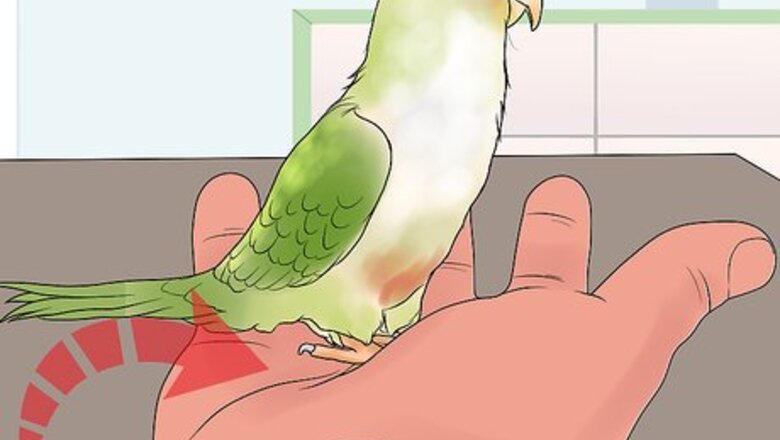
views
Spending Time Together
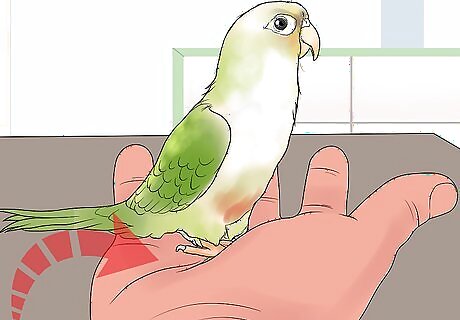
Handle the bird with care so it learns to trust you. Conures love being held and picked up, but they need a gentle and firm hand. You can put your hand out and let the conure step up onto your hand. Then it may climb your arm or move to your shoulder. Use this opportunity to offer it some head scratches. You can grab it by its body with your whole hand and hold it in this manner for short periods of time. Make sure that you instruct young children on how to properly interact with the bird before you allow them to pick it up. Never squeeze or hit your bird.
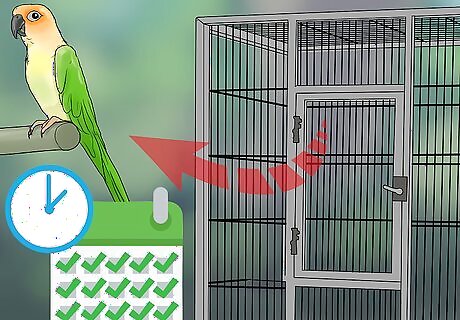
Let the conure out of its cage for several hours every day. Conures are very interactive birds who need quite a bit of attention and engagement to be happy. You should consider leaving the bird's cage door open for much of the time that you are home with it. This will give it the freedom to move around and to interact with you. Conures enjoy being around their humans, so let the bird perch on your shoulder while you're watching television, surfing the internet, or doing other activities around the house. If conures are neglected, they will develop bad behaviors – like screeching, inappropriate chewing, or even nipping at their owners. Make sure you have enough time to devote to a conure each day before you decide to get one.
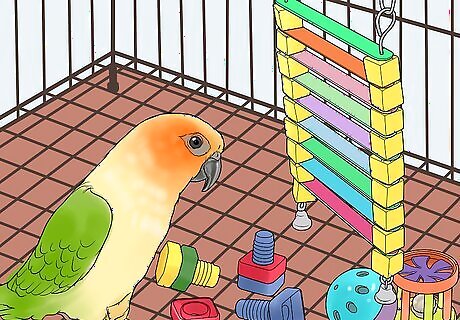
Provide a variety of toys. Conures are incredibly intelligent birds that require a lot of stimulation to stay happy. Choose a variety of toys to put inside your bird's cage. Pick various colors, textures, shapes, and sizes. This will help keep your bird happy and entertained. Consider challenging toys like ladders and puzzles to stimulate your bird. Make sure your bird has plenty of chewable toys. This will keep your bird from developing inappropriate chewing habits. Your conure will play on its own if you provide it with a sufficient number of toys. However, the bird will also benefit from interactive playtime with you.
Communicating with Your Bird
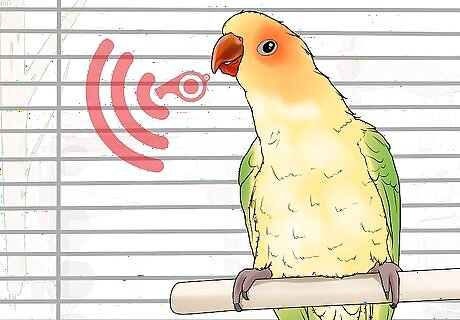
Recognize the different sounds your conure makes. Conures are well known for their communication skills. They love to engage with their humans and other birds. Take some time to familiarize yourself with the various sounds your conure makes and figure out what each sound means. If your conure is signing or whistling, it means that your bird is happy and healthy. A chattering bird is usually happy, though loud chattering could be a sign that your bird is trying to get your attention. Tongue-clicking often means that the bird is simply entertaining itself, though it could be a sign that it wants you to pet it or pick it up. If your conure seems to growling, this usually means that it is feeling threatened or bothered in some way.
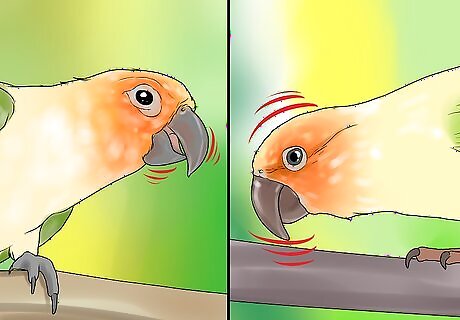
Notice beak grinding and head bobbing. Your conure will also communicate with you via its body language. If your conure is grinding its beak back and forth, this is usually a sign of contentment. Repeated head bobs are typically another sign of contentment, but could also be a request for attention. Monitor the movements your bird makes with its head to show that it is happy.
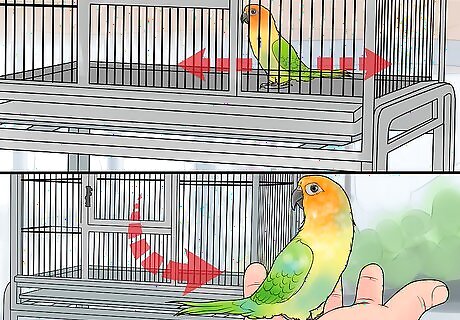
Pick up your bird if you see it pacing. If your conure is pacing back and forth in its cage, this probably means it wants to be picked up. On the other hand, a lack of movement can also indicate happiness. Standing on one foot indicates that your bird is happy, relaxed, and may be ready for a nap.
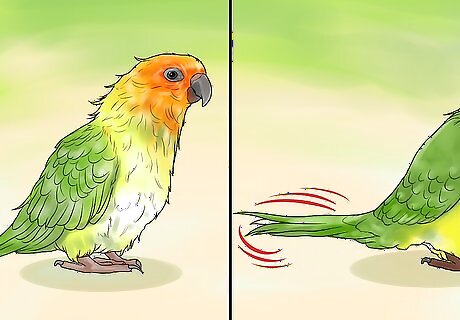
Watch for ruffled feathers and tail movements. Ruffled feathers can mean that your bird is cleaning itself or that it is cold. If the feathers seem to remain ruffled for a long period of time, this could indicate that your bird is sick and should be taken to the veterinarian. A tail shake can be a sign that your bird is ready to play. But a fanned out tail could be a sign of aggression.
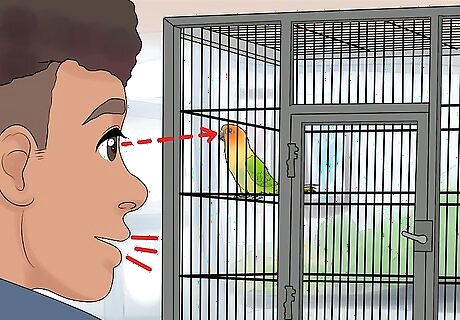
Make eye contact and speak slowly. Since some conures learn to speak over time, you should treat your conure like a child who is learning language for the first time. Look directly at the bird and speak slowly. Enunciate your words clearly. Conures often try to communicate through eye pinning, which means that their pupils dilate and then return to their normal size. This is your bird's way of responding to stimuli and by telling you that it is happy or excited about something. However, if combined with ruffled feathers or an aggressive stance, eye pinning can also be a warning. Monitor your bird's behavior and, over time, you'll learn what its movements mean.
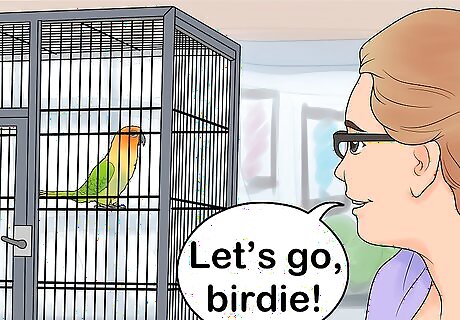
Be consistent. If you expect your conure to learn certain words or phrases, you need to be consistent when you speak to the bird. Use the same words and phrases over and over. Always identify objects in the same way. This will help your bird learn. For example, if you want your bird to know it's time for playtime outside of the cage, use the same phrase each time. You might consider saying, “Let's go, birdie!” or “Come on out!” But don't use different phrases interchangeably. Pick one and stick with it. Birds are quick learners and can internalize unintended lessons quickly. For example, let's say you ask your bird to step onto your hand. It pecks you, so you withdraw. The bird may quickly learn that pecking is an effective way to get what it wants. Monitor your own reactions to help your bird learn what you intend.
Teaching Your Conure Tricks
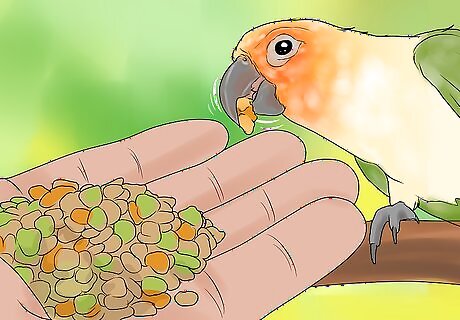
Use positive reinforcement. When training your conure, it's important to use positive reinforcement as a training tool. Don't punish your bird for bad behavior by yelling or withholding food or affection. Instead, give your bird a reward every time it behaves in a desirable way. Possible rewards can include treats, physical affection, or access to a favorite toy.
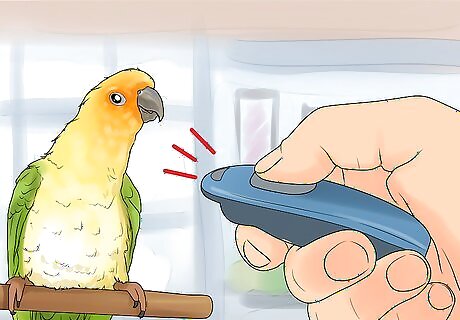
Try clicker training. This kind of training teaches the bird to respond in a certain way when it hears the sound of a clicker, usually in combination with some kind of positive reward. This method requires repetition and patience, but is quite effective in the end. If you want your bird to fly to your shoulder when you click for it, you should start by clicking and placing the bird on your shoulder. Then give it a treat. Repeat this action over and over until the bird begins associating the clicker noise with the action of being on your shoulder and getting a treat. Over time, the bird will start to do the action when it hears the clicker sound, even if the reward is just a head rub.
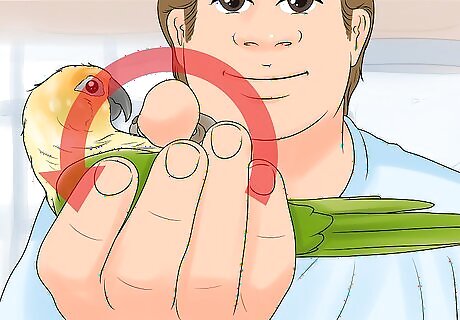
Teach your conure to do a flip. Once your conure is comfortable being held on its back, try teaching it to do a flip by pushing its tail up from behind while it is lying on its back. Then stick your finger out so that the bird is encouraged to step up onto your finger and spin around. To get a conure comfortable being held on its back, you just need to take some time and allow the conure to adjust and trust the new position. Begin by holding the conure to your chest with your other hand across its back. After a little while, you can begin to lean forward until the conure is upside down, but still supported by your chest on the top and your hand on the bottom. After some time, the bird should learn to trust you to hold it on its back.




















Comments
0 comment